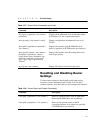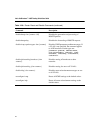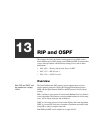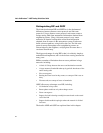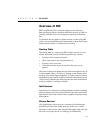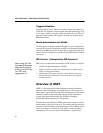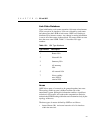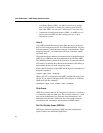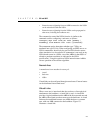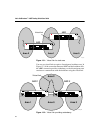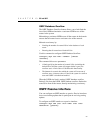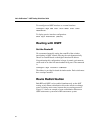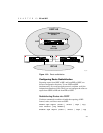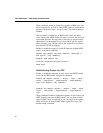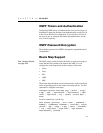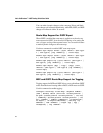
C H A P T E R 13 RIP and OSPF
229
• External routes originating from an ASBR connected to the NSSA
can be advertised within the NSSA.
• External routes originating from the NSSA can be propagated to
other areas, including the backbone area.
The command to control the NSSA function is similar to the
command used for configuring a stub area, as follows:
configure ospf area <area_id> nssa {summary |
nosummary} stub-default-cost <cost> {translate}
The translate option determines whether type 7 LSAs are
translated into type 5 LSAs. When configuring an OSPF area as an
NSSA,
translate should only be used on NSSA border routers,
where translation is to be enforced. If
translate is not used on any
NSSA border router in a NSSA, one of the ABRs for that NSSA is
elected to perform translation (as indicated in the NSSA
specification). Using this option on NSSA internal routers inhibits
correct operation of the election algorithm.
Normal Area
A normal area is an area that is not any of:
• Area 0
• Stub area
• NSSA
Virtual links can be configured through normal areas. External routes
can be distributed into normal areas.
Virtual Links
When a new area is introduced that does not have a direct physical
attachment to the backbone, a virtual link is used. A virtual link
provides a logical path between the ABR of the disconnected area and
the ABR of the normal area that connects to the backbone. A virtual
link must be established between two ABRs that have a common
area, with one ABR connected to the backbone. Figure 13.1
illustrates a virtual link.



